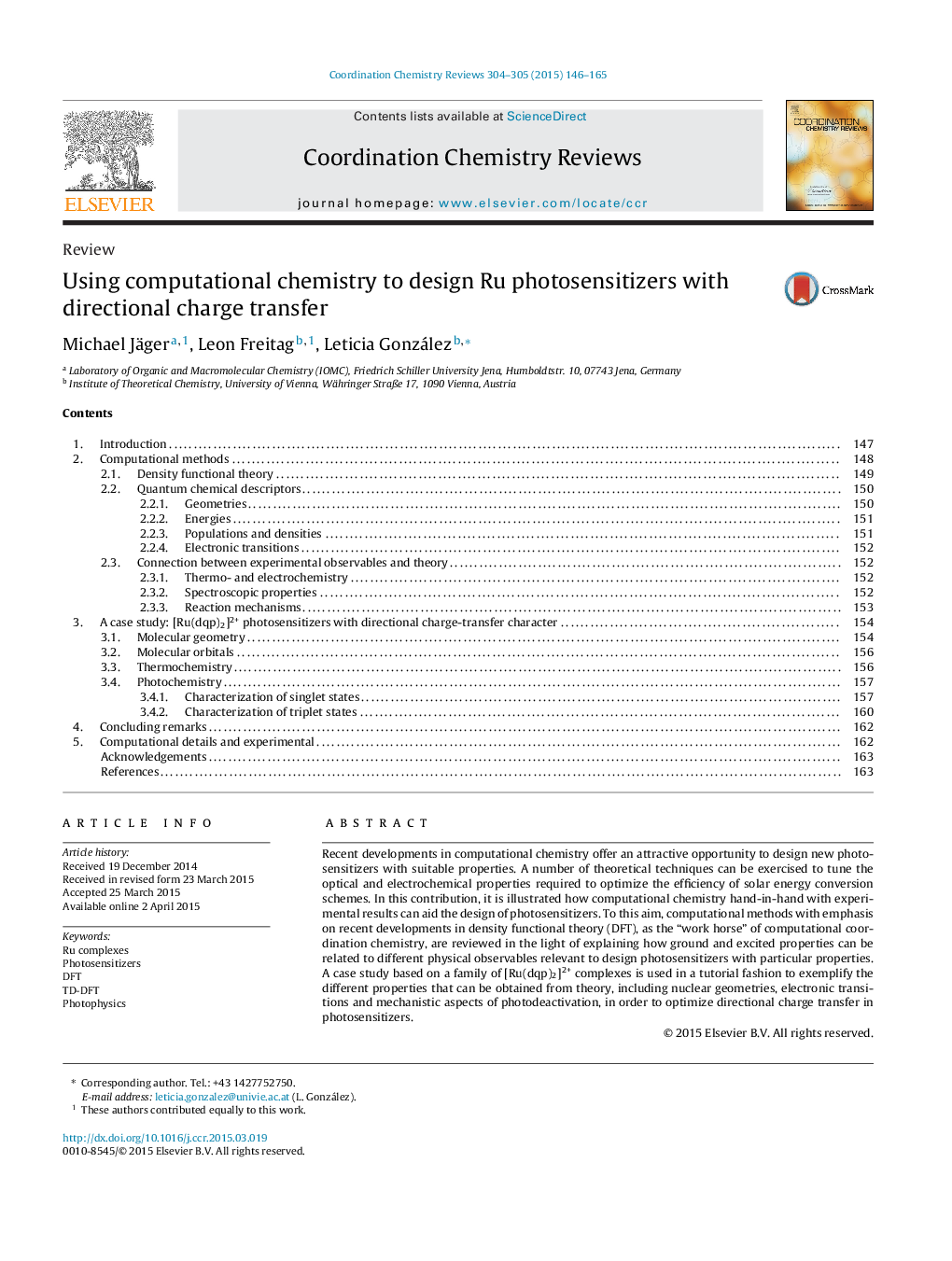| Article ID | Journal | Published Year | Pages | File Type |
|---|---|---|---|---|
| 1300902 | Coordination Chemistry Reviews | 2015 | 20 Pages |
•This review provides an overview of quantum chemical descriptors useful to interpret physical properties of photosensitizers.•The interpretation of experimental data (X-ray, NMR, absorption, emission) with computational chemistry is exemplified on a family of [Ru(dqp)2]2+ complexes.•Design of directional charge-transfer character in Ru photosensitizers is assisted with computational chemistry.
Recent developments in computational chemistry offer an attractive opportunity to design new photosensitizers with suitable properties. A number of theoretical techniques can be exercised to tune the optical and electrochemical properties required to optimize the efficiency of solar energy conversion schemes. In this contribution, it is illustrated how computational chemistry hand-in-hand with experimental results can aid the design of photosensitizers. To this aim, computational methods with emphasis on recent developments in density functional theory (DFT), as the “work horse” of computational coordination chemistry, are reviewed in the light of explaining how ground and excited properties can be related to different physical observables relevant to design photosensitizers with particular properties. A case study based on a family of [Ru(dqp)2]2+ complexes is used in a tutorial fashion to exemplify the different properties that can be obtained from theory, including nuclear geometries, electronic transitions and mechanistic aspects of photodeactivation, in order to optimize directional charge transfer in photosensitizers.
Graphical abstractFigure optionsDownload full-size imageDownload high-quality image (162 K)Download as PowerPoint slide
